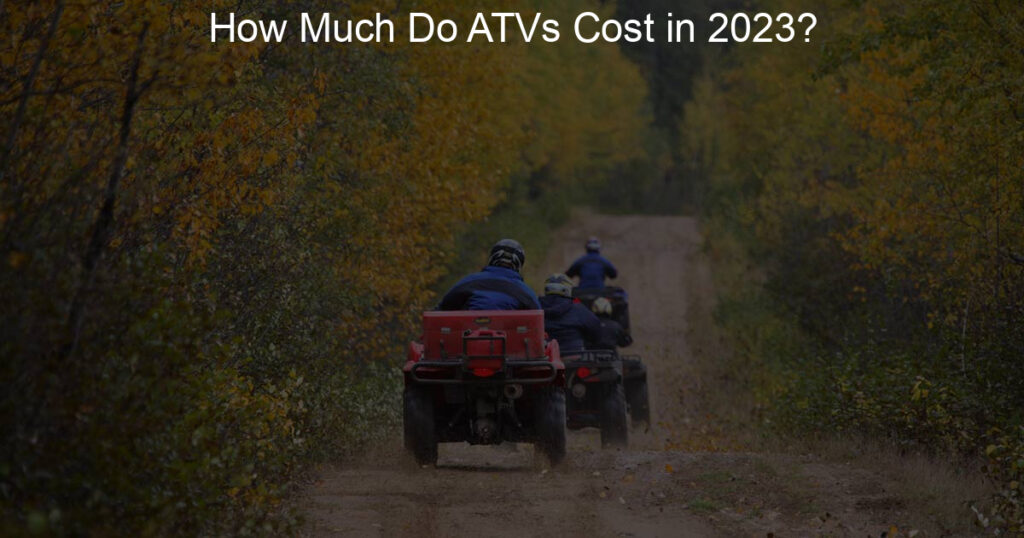Are you considering purchasing an ATV in 2023 and wondering, “How much do ATVs cost?” You’ve come to the right place! In this comprehensive guide, we’ll explore the costs associated with different types of ATVs, their features, and other factors that determine their price. So buckle up and let’s dive into the fascinating world of ATV costs!
Short Summary
- Understanding ATV costs is essential when purchasing an ATV.
- The cost of an ATV depends on the type, engine size, and performance, optional features & accessories, as well as whether it’s new or used.
- Popular brands include Honda, Yamaha, and Polaris. Other notable brands worth considering are Can-Am, Suzuki, etc.
Here is a quick table for a better understanding of the price ranges from the ATV types.
| ATV Type | Price Range | Notable Models |
|---|---|---|
| Sport ATVs | $6,000 – $8,000 | Honda TRX450R, CanAm Renegade 850, Yamaha Raptor 700R, Polaris Scrambler XP 1000 |
| Utility ATVs | $5,000 – $15,000 | Polaris Sportsman 450 H.O. Base ($6,249), CanAm Outlander MAX XT 650 ($11,349) |
| Youth ATVs | $2,000 – $4,000 | CanAm DS 70, Polaris Outlaw 50, Kawasaki KFX 90, Yamaha Raptor 90, Polaris Phoenix 200 |
| Side-by-Side ATVs (New) | $7,799 – $12,399 | Polaris RZR, CanAm Maverick, Yamaha YXZ, Honda Talon |
| Used ATVs | $3,000 – $10,000 | Various models depending on the brand, model year, specifications, and overall condition |
Understanding ATV Costs
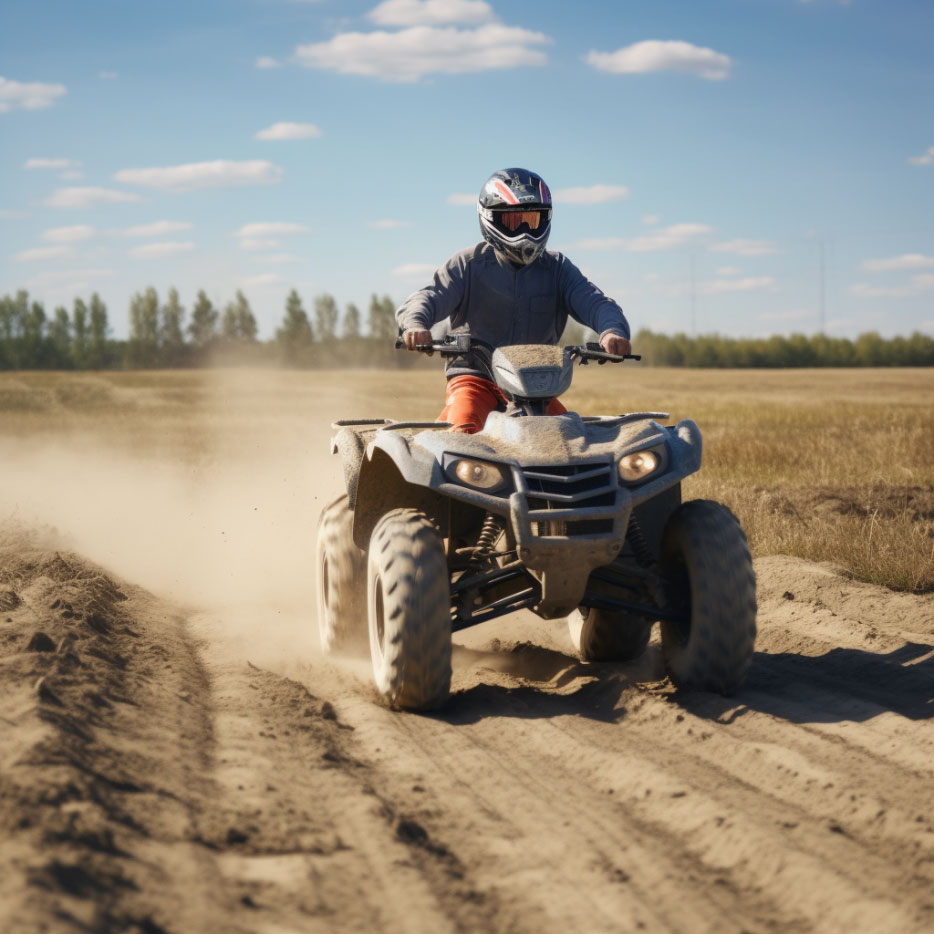
When it comes to ATV costs, there are several factors to consider. The type of ATV, engine size, and optional features all play a crucial role in determining the price.
In the following sections, we’ll explore each of these factors in detail, helping you make an informed decision when purchasing your perfect ATV.
Types of ATVs
The first factor to consider is the type of ATV. There are four main categories: sport, utility, youth, and side-by-side ATVs. Each type has its own unique features, uses, and price range. Sport ATVs are designed for speed and agility, making them perfect for racing or recreational use.
Utility ATVs, on the other hand, are built for work, with features such as cargo beds and towing capabilities suited for tasks like trail riding or hauling equipment. Youth ATVs are smaller and designed specifically for younger riders, while side-by-side ATVs offer additional seating for passengers and are popular for off-roading adventures.
Understanding the differences between these types of ATVs is crucial when determining the cost. For example, sports ATVs typically have advanced suspension systems and larger wheels for improved off-road handling, which can increase the price.
Utility ATVs, with their focus on practicality and function, may come with additional features like cargo beds or brush guards, also impacting the cost. Youth ATVs usually have smaller engine sizes and fewer optional accessories, making them more affordable. Side-by-side ATVs can vary greatly in price, depending on the model and additional features.
Engine Size and Performance
Engine size and performance are also significant factors in determining ATV cost. Sport ATV models, for example, come in engine sizes ranging from 250cc to 700cc, with larger engines generally costing more.
Utility ATVs, on the other hand, can have engine sizes up to 1000cc, allowing for greater power and performance but also a higher price tag. Youth ATVs usually have smaller engines, between 50cc and 250cc, keeping costs lower.
Most riders will find that a moderate size engine (500cc to 850cc) provides sufficient power for their needs without breaking the bank.
Optional Features and Accessories
Another factor to consider when determining the cost of an ATV is the optional features and accessories available. Some common add-ons include winches, tow straps, additional storage, GPS, phone mounts, loading ramps, tool kits, LED lights, and emergency supplies. These extra features can enhance the performance and functionality of your ATV, but they can also increase the overall price.
When considering optional features and accessories, it’s essential to weigh the cost against their usefulness for your specific needs. For example, if you plan on using your ATV primarily for trail riding, you might not need a winch or tow straps. On the other hand, if you intend to use your ATV for work-related tasks like hauling equipment, investing in a cargo bed or additional storage might be worth the extra cost.
Cost Breakdown by ATV Type
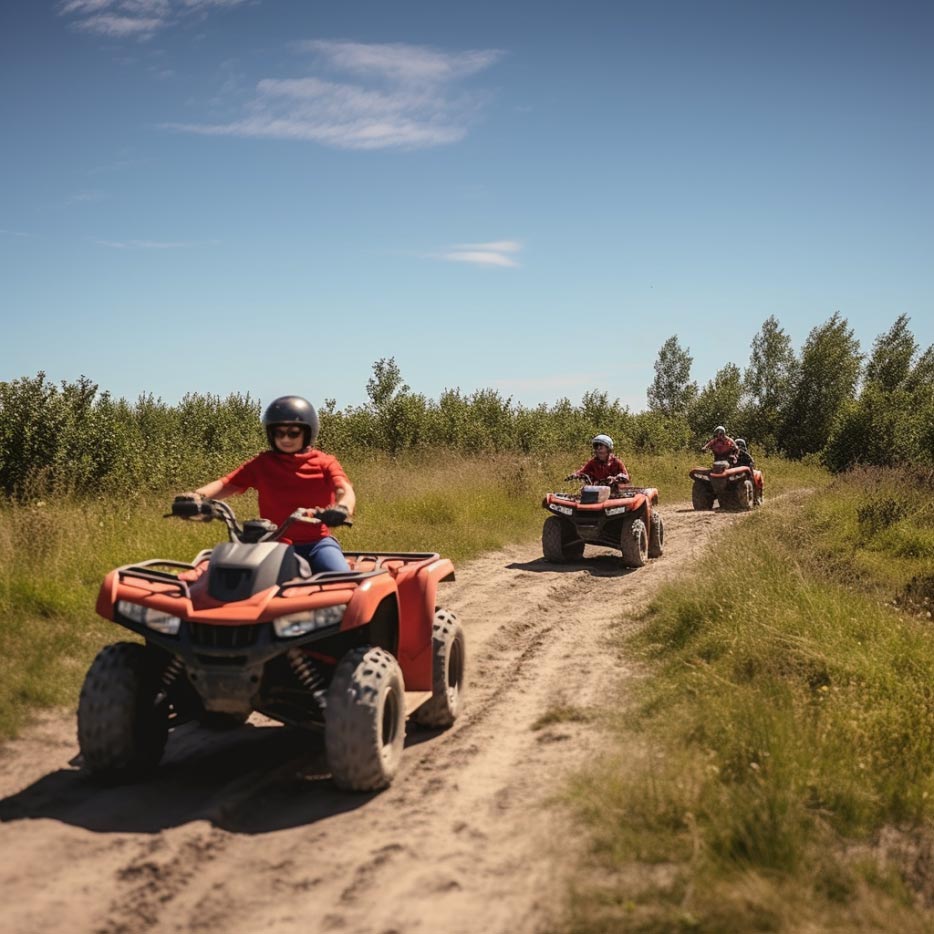
Now that we’ve covered the factors that influence ATV cost let’s break down the price ranges for each type of ATV. Sport ATVs typically range from $6,000 to $8,000, with notable models including Honda TRX, CanAm Renegade, Yamaha Raptor, and Polaris Scrambler.
Utility ATVs cost around $5,000 to $8,000, with models such as Polaris Sportsman 450 H.O. Base costing $6,249 and CanAm Outlander MAX XT 650 costing $11,349.
Youth ATVs have lower power engines, smaller sizes, and cost around $2K-4K, with models including CanAm DS 70, Polaris Outlaw 50, Kawasaki KFX 90, Yamaha Raptor 90, and Polaris Phoenix 200.
Sport ATV Prices
As mentioned earlier, sport ATVs typically range in price from $6,000 to $8,000. Some popular models to consider include the Honda TRX450R, CanAm Renegade 850, Yamaha Raptor 700R, and Polaris Scrambler XP 1000.
These models are known for their speed, agility, and off-road capabilities, making them the ideal choice for ATV enthusiasts who want a thrilling ride.
Utility ATV Prices
Utility ATVs are designed for work and practical use, with prices ranging from $5,000 to $15,000, depending on the make and model. Some popular utility ATVs include the Polaris Sportsman 450 H.O. Base, which costs around $6,249, and the CanAm Outlander MAX XT 650, priced at $11,349.
These ATVs are equipped with features such as cargo beds, towing capabilities, and powerful engines, making them suitable for tasks like trail riding, hauling equipment, and off-roading.
Youth ATV Prices
Youth ATVs are designed specifically for younger riders, with smaller engines and more compact sizes to accommodate their smaller frames. Prices for these ATVs generally range from $2,000 to $4,000, depending on the brand and model.
Some popular youth ATV models include the CanAm DS 70, Polaris Outlaw 50, Kawasaki KFX 90, Yamaha Raptor 90, and Polaris Phoenix 200. These ATVs offer a safe and enjoyable riding experience for younger drivers, making them an excellent investment for families with children interested in off-roading.
Side-by-Side ATV Prices
Side-by-side ATVs, also known as UTVs, offer additional seating for passengers and are popular for off-roading adventures. These ATVs can vary greatly in price, with an average cost range between $7,799 and $12,399 for new models. Pre-owned models from 2016-2018 can also be found at a more economical cost.
Some popular side-by-side ATV models include the Polaris RZR, CanAm Maverick, Yamaha YXZ, and Honda Talon.
Buying a Used ATV
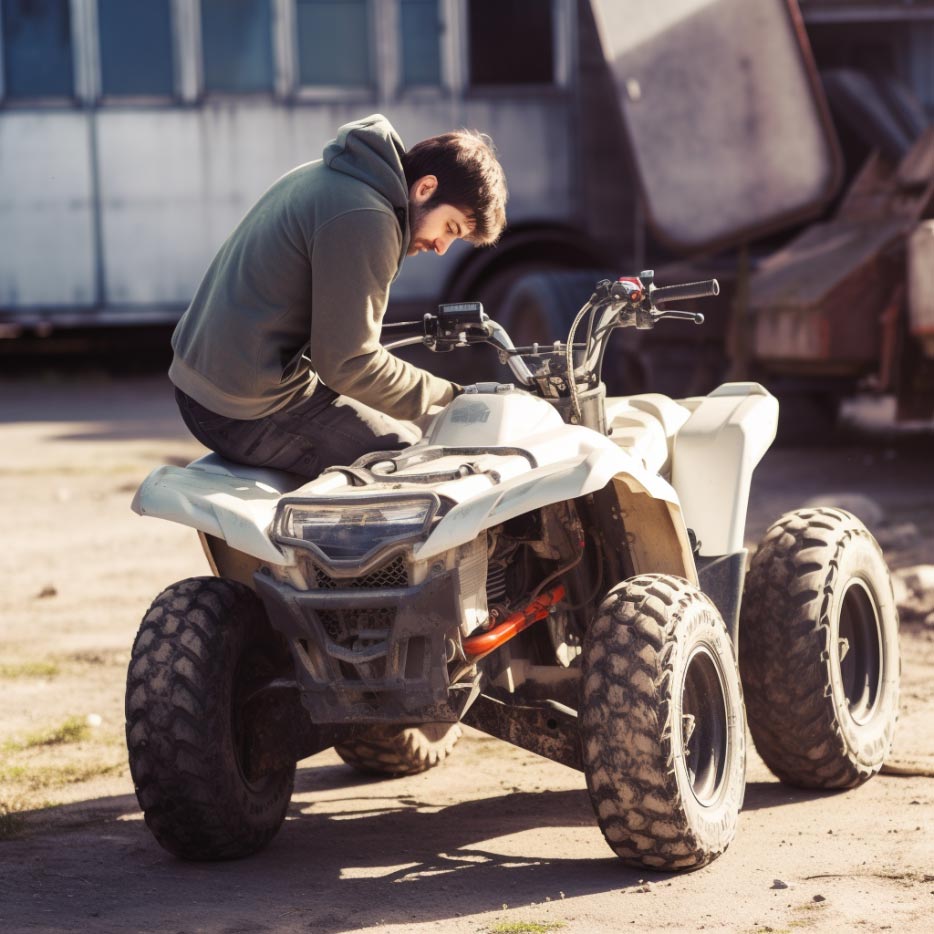
Purchasing a used ATV can be a cost-effective alternative to buying a brand-new model. The average cost for a pre-owned ATV is around $5,592, with the potential for negotiation and the ability to purchase higher-end vehicles at a more affordable price.
Researching local market value through resources like Craigslist and price guides can help you determine a fair price for a used ATV and ensure you’re getting the best deal possible.
Price Range for Used ATVs
The price range for used ATVs can vary greatly depending on factors such as brand, model year, specifications, and overall condition. Generally, used ATVs can be found for prices ranging from $3,000 to $10,000.
When considering a used ATV, it’s essential to research the local market value to determine a fair price and avoid overpaying.
Evaluating a Used ATV
Before purchasing a used ATV, it’s crucial to carefully evaluate its condition to ensure you’re making a wise investment. Some key steps to take when evaluating a used ATV include examining the fluids, inspecting the tires and brakes for signs of wear and tear, assessing the shocks, and checking for rust or cracks in the body.
Taking the time to inspect a used ATV thoroughly can help you avoid potential issues down the line and ensure you’re getting the most value for your money.
Additional Costs to Consider

In addition to the initial purchase price of an ATV, there are several additional costs to consider when budgeting for ATV ownership. These costs can include gear and equipment, maintenance and repairs, insurance and registration fees.
In the following sections, we’ll dive deeper into each of these costs to give you a more comprehensive understanding of the total cost of owning an ATV.
Gear and Equipment
Safety is paramount when riding an ATV, making it essential to invest in proper gear and equipment. Some necessary items include a helmet, goggles, gloves, boots, and protective clothing. While these items can add to the overall cost of ATV ownership, they play a critical role in protecting the rider from potential injuries.
Additionally, it’s a good idea to carry essential items like a cell phone, simple tool kit, air pump, and tire for added safety and convenience on the trails.
Maintenance and Repairs
Maintaining and repairing an ATV is an ongoing expense that should be factored into the overall cost of ownership. The cost of maintaining and repairing an ATV can vary depending on the type of ATV and the specific services required. Typical expenses can include routine tune-ups, which can range from $100-400, rebuilding the top-end, which can cost between $500-700, and replacing a clutch, which can range from $300-500.
Regular maintenance is crucial for ensuring the longevity and performance of your ATV, so it’s essential to budget for these costs.
Insurance and Registration
Insurance and registration costs are other aspects to consider when budgeting for ATV ownership. The average cost of ATV insurance varies depending on the state and insurance company, with liability-only coverage costing around $88 per year and full coverage costing around $327 per year. The average cost of ATV insurance is roughly $100.47 per month for a standard policy.
Registration costs can also vary depending on the state you live in, so it’s essential to research the specific fees for your location.
Top ATV Brands to Consider
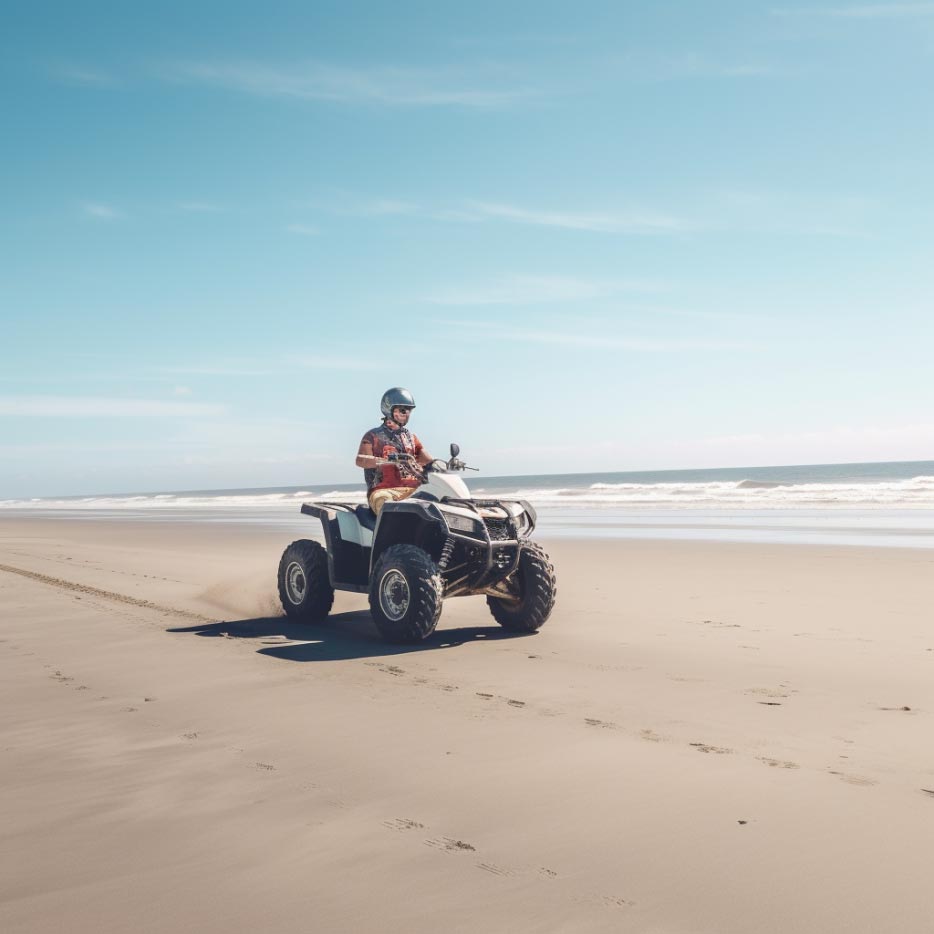
When shopping for an ATV, it’s essential to consider the top brands in the market, such as Honda, Yamaha, and Polaris. Each brand offers unique features and benefits, making them popular choices among ATV enthusiasts.
In the following sections, we’ll explore each of these top ATV brands in more detail, highlighting their advantages and disadvantages to help you make an informed decision when purchasing your ATV.
Honda
Honda ATVs are known for their reliability and long lifespan, with some models lasting over 20 years with proper maintenance. They offer a range of models, from sport ATVs to utility ATVs, all designed with comfort and performance in mind.
Some advantages of Honda ATVs include their comfortable ride, lightweight design, and strong low-end power, making them suitable for trail riding. However, they can be more expensive and fragile compared to other brands, so it’s crucial to weigh the pros and cons when considering a Honda ATV.
Yamaha
Yamaha ATVs are popular for their powerful performance and potential for customization. They offer a wide range of models, from sport ATVs to utility ATVs, all equipped with a four-stroke engine and features like Electronic Fuel Injection (EFI). Some advantages of Yamaha ATVs include their Electronic Fuel Injection, powerful performance, and tremendous potential for modifications.
However, they may lack certain safety features and are not suitable for passengers, and their 2-stroke engines require premixing of oil and fuel.
Polaris
Polaris ATVs are recognized for their power and performance, making them suitable for utility, loading, and hauling tasks. They offer a range of models, from sports ATVs to utility ATVs, and perform well in various terrains.
Some advantages of Polaris ATVs include their power and suitability for utility tasks. However, some complaints have been made regarding their reliability, so it’s important to consider this factor when choosing a Polaris ATV.
Other Notable Brands
In addition to the top ATV brands mentioned above, there are several other notable brands worth considering, such as Can-Am, Suzuki, Kawasaki, Arctic Cat, Kymco, DRR, Linhai, and CFMoto. Each of these brands offers a range of ATVs with unique features and benefits, making them popular choices among ATV enthusiasts.
When shopping for an ATV, it’s essential to research and compare various brands and models to find the perfect fit for your needs and budget.
Summary
In conclusion, the cost of an ATV in 2023 can vary greatly depending on factors such as type, engine size, and optional features. By understanding these factors and considering top ATV brands like Honda, Yamaha, and Polaris, you can make an informed decision when purchasing your perfect ATV.
Don’t forget to factor in additional costs like gear and equipment, maintenance and repairs, and insurance and registration to ensure you’re prepared for the total cost of ATV ownership. With this knowledge in hand, you’re ready to hit the trails and enjoy the thrilling world of ATV riding!
Frequently Asked Questions
What is the average cost of a four-wheeler?
On average, four-wheelers cost around 7,000 dollars, ranging from 3,000 to 15,000 dollars depending on the model.
Accordingly, it is important to consider your budget and needs before making a purchase.
How much should I spend on an ATV?
Considering the information provided, it is advisable to spend between $5,000 and $10,000 on an ATV in 2021.
Therefore, if you are looking for an ATV, it is best to budget around this range.
Is 500 hours a lot for an ATV?
Considering the ATV mileage range and hours, 500 or fewer is considered a desirable range.
While 5,000 hours and above are considered to be high miles for ATVs and UTVs, 500 hours for an ATV can still be a suitable amount.
Why are used ATV prices so high?
The limited supply of used ATVs has increased their value, resulting in prices that are too high for many potential buyers. This is mainly due to the increase in demand and the lack of available new models.
Consequently, used ATV prices remain high.

